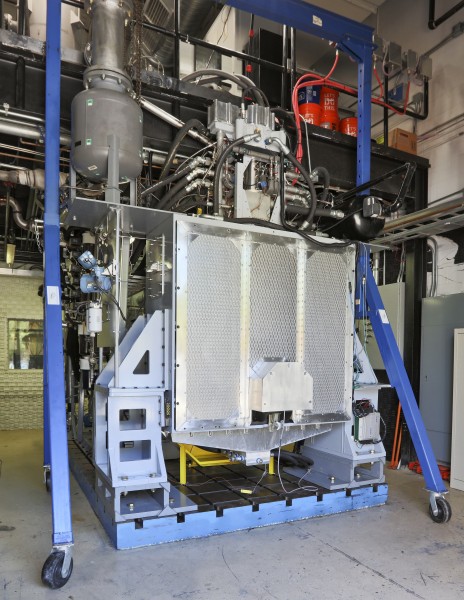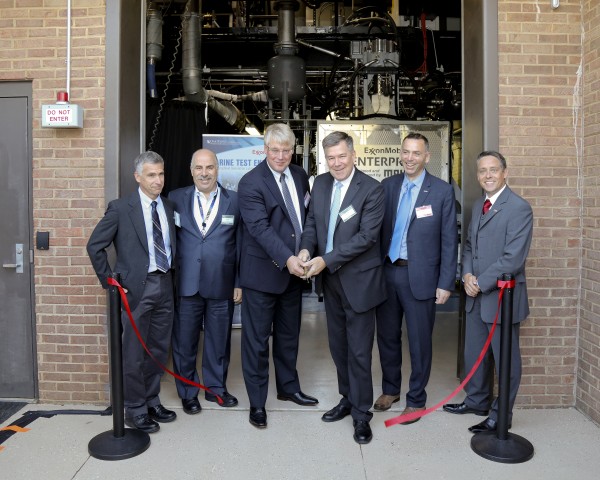
Oak Ridge National Laboratory researcher Eric Nafziger works on a marine diesel engine prototype used to test new lubricants for ExxonMobil. (Photo by ORNL)
A unique diesel engine prototype is evaluating next-generation lubricants for the global marine industry, and the project was showcased by Oak Ridge National Laboratory and ExxonMobil during a ribbon-cutting ceremony last week.
The ribbon-cutting was on Monday, October 24, at ORNL’s National Transportation Research Center in Hardin Valley. The ribbon-cutting included ORNL lead researcher Mike Kass and Frans Horjus, global marine lubricants manager for ExxonMobil.
In a press release posted on its website, ExxonMobil announced the first firing of the new marine test engine to speed the development of next-generation marine lubricants.
That enables the research and development of next-generation cylinder and system oils for the marine industry; speeds the timeline to bring new products to market, considering evolving emissions regulations; and replicates a demanding field environment through scientifically derived operating conditions, the press release said.
ExxonMobil said the test engine will give the company a way to help meet the needs of increasingly complex engine designs driven by changing regulation affecting the industry.
“Engines are now operating under more varied and demanding conditions, placing new challenges on the engine lubrication,” the press release said.
The formulation of next-generation cylinder oils will play a key part in improving engine protection and performance, the press release said.
“Our test engine is an exciting step forward for the industry,” said Steve Walker, global marine equipment builder manager at ExxonMobil. “ExxonMobil’s commitment to developing next-generation lubricants will support the marine industry’s pursuit of increased performance, protection, and efficiency.”
ExxonMobil said the test engine offers unique capabilities due to its rapidly configurable bore-stroke ratio and its ability to simulate a wide range of new engine design parameters. ExxonMobil’s research and engineering teams can also apply scientifically derived operating conditions to replicate demanding field environments to which marine lubricants are exposed. A range of different fuels can be used in the test engine when formulating specific high and low base number, or BN, cylinder oils.

Oak Ridge National Laboratory operates a new marine diesel engine prototype at the lab’s National Transportation Research Center in Hardin Valley. The scaled-down version that replicates a large cargo ship engine will be used to test new lubricants for the marine industry. (Photo by ORNL)

Representatives from Oak Ridge National Laboratory, ExxonMobil, and MAHLE Powertrain unveiled a marine diesel engine prototype to be used for new lubricants testing. Pictured from left are Mike Kass, ORNL; Moe Khaleel, ORNL; Frans Horjus, ExxonMobil; John Fogarty, ExxonMobil; Hugh Blaxill, MAHLE Powertrain; and Claus Daniel, ORNL. (Photo by ORNL)
Leave a Reply